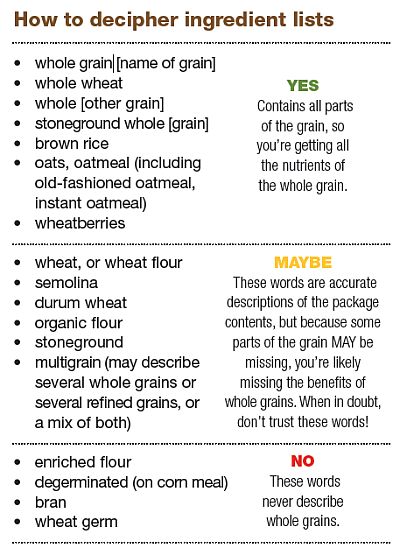
Many state and municipal governments have created or are planning programs for preventing obesity. These efforts can encourage healthy living habits and lower body fat. These efforts can be coordinated by local governments, which will focus on the needs and wants of residents. One example of a local government-led obesity prevention program is the establishment of a community fitness center. This is a great way for kids to exercise and decrease their calorie intake. A fitness center provides facilities for physical activity and can be a great way to keep a community healthy.
Numerous state governments have taken steps towards fighting obesity. One example is that the government could establish a sugar reduction target to consumers. This goal is intended to improve people's health. The same goes for portion sizes. This type of program is also suitable for pregnant women and mothers with young children. These programs have many benefits for all ages, even the elderly. These strategies can be used in your community, but some people might not know.

While the federal government has long been committed to improving nutrition and physical fitness, there has been little attention paid to obesity prevention. The number one indicator of health in the United States is obesity. Programs must be targeted to address it. The President's Council on Physical Fitness and Sports is developing a national initiative, Fit 'n Active Kids, and the Partnership for a Walkable America. America on the Move has been developed by the Partnership for Healthy Eating and Active Living. The program aims to prevent adult weight loss through increased physical activity and decreased caloric intake.
Another option to help prevent obesity is funding efforts through CDC grants. These grants can be used to fund programs that are designed for people with disabilities. The grant program at the CDC focuses primarily on chronic disease prevention and capacity building. It can also play a key role in the development of community demonstrations. In FY 2003, the CDC provided a total of twenty states with these grants. It is possible that additional states will benefit from expanding the total grant funds to the state level.
Many public health programs are available to help prevent obesity. The CDC also provides funding for states, universities, and local communities that support healthy eating and active lifestyles. Its website contains information on grantee programs, funding sources, and more. Not all obesity causes can be addressed by public health programs. Only a few programs can address all types of obesity. They can improve the health of the entire community by addressing the root cause of the disease.

New Jersey's Health Department is intensifying its fight against the bulge. It created the Office of Nutrition and Fitness, which coordinates programs to prevent obesity. Children and adults are considered the most important state in the country by the state. It is crucial that the government invests heavily in nutrition education, as there are so many overweight and obese children. The federal government should support its efforts in nutrition education, as it is crucial for the health and well-being of its citizens.
FAQ
Is it true that overeating protein causes kidney stones?
Protein is essential for healthy bones and tissue. But consuming too much protein can lead to calcium excretion through urine. This can lead to kidney stone formation.
It is important to remember that not all people get kidney stones from eating more than 2g protein per kilogram (2.2lbs) of body weight. It is possible to eat high levels of protein without developing kidney stones.
By being careful with your sodium intake, you can prevent kidney stones. Sodium helps regulate water balance in the kidneys. Too much sodium results in a higher risk of developing kidney stones.
If you have kidney stones, you can reduce your intake of protein. Protein provides about half of the daily caloric needs for most adults. You'll lose weight if you reduce your intake of protein.
If you do decide to eat more protein, don't go overboard. Do not eat more than 20% of your daily calories from protein.
What is your favorite workout to build muscle mass?
There are two major exercises that you should do when you want to build muscle mass. These include isolation exercises and compound movements. While isolating exercises target specific muscles, compound movements are designed to focus on multiple muscle groups at once.
Choose exercises that test all your major muscle groups to improve your workouts. This will ensure that you work hard every session.
An app called MyFitnessPal allows you to keep track of everything. It allows you log everything, including calories burned and weight lifted. You can also create customized meal plans based upon your goals.
Can I go to the gym seven days a week?
Yes, you can go to the gym seven days a week but not all at once. You must find a time you can do it without feeling exhausted and depleted.
This will help you remain motivated and have more energy to do other activities.
You should also ensure that your meals are well-balanced. This will ensure that you aren't tired and slow when you go to the gym.
Last but not least, ensure there are no other people competing for your time. You might want to avoid working out on school nights if you have kids. They can distract you from your exercise routine.
Statistics
- Are You One of the 20% of Guys (mh.co.za)
- Cardmembers earn 5% Back at Amazon.com with a Prime Credit Card. (amazon.com)
- Get free shipping and 25% off today. (healthline.com)
- An estimated calorie range for moderately active adult males falls between 2,200 to 2,800 calories per day, depending on age. (eatright.org)
- The PRS enabled risk stratification for overall prostate cancer and lethal disease with a four-fold difference between men in the highest and lowest quartiles (HR, 4.32; 95% confidence interval [CI], 3.16-5.89). (pubmed.ncbi.nlm.nih.gov)
External Links
How To
How can a man get in shape in 30 days?
Breaking down your fitness goals into manageable steps is the best way to reach your goals.
Each day you need to be working towards your goal. This could mean doing 10 pushups every 5 minutes or running 3 km.
Positive results will be achieved if you do this consistently over time.
Consistency is the key here. It is important to persevere until you succeed.
What's the difference between Aerobic Fitness & Anaerobic Fitness, and how can you tell?
Anaerobic fitness means that our bodies can perform intense physical work with no oxygen. During periods of high-intensity exercise, we use anaerobic pathways to provide enough energy to complete the task. Anaerobic pathways include glycolysis (creatine phosphate), the phosphagen and lactic acid.
Aerobic fitness, on the other hand, is a sustained low-intensity exercise. Aerobic exercise is a form of aerobic exercise in which oxygen is the primary fuel source for the cells. In other words, the aerobic pathway provides more energy than the anaerobic pathway.
You must build your aerobic capacity before you can run a marathon. If you are only focusing on increasing your anaerobic capabilities, you won't finish the race.
Aerobic fitness is also referred to as cardiovascular fitness. Step tests and VO2 max testing are the most popular methods to measure cardiovascular fitness.
VO2 Max Testing
The maximum amount of oxygen (O2) the body can use during exercise is called VO2 max. This test measures the amount of O2 the body can utilize while exercising.
This test measures cardiovascular fitness in a way that is most accurate. However, the test can only be administered by highly trained professionals and requires expensive equipment.
Step Tests
Step tests are an easy but powerful way to determine your cardiovascular fitness. You will be asked to walk, jog or run for a specific time on a track. This is based on your age or weight.
These tests can be conducted almost anywhere and are cheap, simple, and easy. For example, you could walk on a treadmill 20 minutes and then stop. You should maintain a constant heart rate throughout the session.
This protocol is called the "Bruce Protocol". Bruce, himself a runner, created this protocol after realizing that he would not feel his heart rate increase when running longer distances.